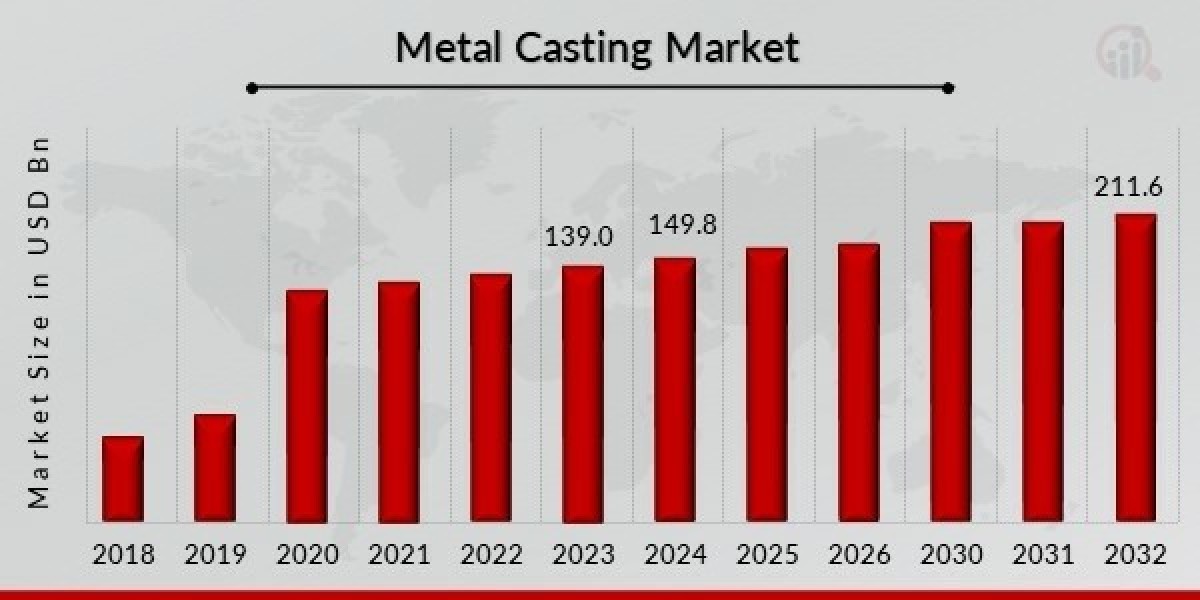The metal casting market plays a significant role in manufacturing and industrial development, serving as a foundational process across various sectors such as automotive, aerospace, construction, heavy machinery, and energy. Metal casting involves pouring molten metal into a mold to create a desired shape, which is then allowed to solidify and cool. This technique is essential for producing complex metal components with high precision and strength, often at lower costs compared to other manufacturing methods. Due to its versatility, it supports the production of a wide range of products, from small automotive parts to large machinery components. The metal casting market continues to be a vital component of the manufacturing ecosystem. It supports diverse industries with essential metal components and continues to evolve through technological innovations and sustainability efforts.
Over the years, the metal casting industry has evolved significantly, with technological advancements enhancing the efficiency, quality, and environmental sustainability of casting processes. Modern foundries now incorporate automation, computer-aided design (CAD), and simulation software to improve accuracy and reduce lead times. Innovations such as 3D sand printing and additive manufacturing have also begun to influence traditional casting techniques, enabling faster prototyping and customization of cast parts. Additionally, improved metallurgical control and material science have expanded the range of metals and alloys used in casting, offering better performance and durability.
The automotive industry remains one of the largest consumers of metal castings, utilizing them in engine blocks, transmission cases, brake components, and structural parts. The demand in this sector is driven by the need for lightweight yet strong materials to improve fuel efficiency and meet environmental regulations. As electric vehicles gain momentum, the casting industry is adapting to produce parts suitable for EV platforms, such as battery housings and motor components. The shift towards sustainability and energy efficiency is also prompting innovation in casting materials and processes.
In the aerospace sector, metal casting is critical for producing high-strength, heat-resistant components used in aircraft engines and structural frameworks. Precision and performance are paramount in this field, which has led to the adoption of advanced casting techniques like investment casting and vacuum casting. These methods help meet the stringent quality standards required for safety and performance in aerospace applications. Similarly, the defense and marine sectors rely on metal casting for producing durable and reliable parts under extreme operating conditions.
Construction and infrastructure development also drive significant demand for metal castings. Cast iron and steel components are commonly used in building supports, pipelines, and machinery. With increasing urbanization and the expansion of public infrastructure projects worldwide, the need for robust construction materials continues to support the growth of the casting industry. Heavy machinery and industrial equipment manufacturers also rely on casting for producing large, complex parts that require structural integrity and wear resistance.
Environmental considerations are becoming increasingly important in the metal casting market. Foundries are under growing pressure to reduce emissions, energy consumption, and waste generation. Many companies are investing in cleaner production techniques, recycling scrap metal, and using renewable energy sources where possible. Regulatory compliance and sustainability goals are shaping the future of the industry, encouraging the adoption of green casting technologies and materials. Furthermore, the industry is focusing on optimizing the lifecycle of cast products, including recyclability and reusability, to minimize environmental impact.
Developing economies are witnessing increased foundry setups due to lower production costs and growing local demand. Meanwhile, mature markets are focusing on technological upgrades, skilled labor development, and automation to maintain competitiveness. The interplay between demand growth in emerging regions and innovation-driven production in developed areas creates a dynamic and evolving landscape for metal casting.








